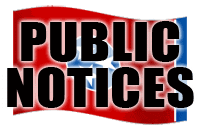Kathy Giovanetti knows all too well that strokes can happen to anyone, regardless of age or fitness level. She is one of many stroke survivors nationwide sharing their stories on World Stroke Day, October 29th, with the American Stroke Association, a division of the American Heart Association, to encourage all Americans to learn the warning signs of stroke.
"Strokes can happen to anyone at any age at any time. It happened to me at the age of 32 while shopping with my two small children," states Giovanetti. "I recognized something was wrong and knew I needed medical attention. I'll be forever grateful that I was taken to the hospital as quickly as possible. We all need to know the warning signs of stroke and what to do because you never know when you'll need to help yourself or be there for someone else."
Each year approximately 800,000 people in the U.S. suffer a stroke. Worldwide, one in four will suffer a stroke in their lifetime. Knowing stroke warning signs and seeking immediate medical attention can make the difference between recovery and disability or death.
The American Stroke Association encourages people to learn the acronym F.A.S.T. to help them remember the warning signs for stroke. F.A.S.T. stands for:
- Face Drooping - Does one side of the face droop or is it numb? Ask the person to smile. Is the person's smile uneven?
- Arm Weakness - Is one arm weak or numb? Ask the person to raise both arms. Does one arm drift downward?
- Speech Difficulty - Is speech slurred? Is the person unable to speak or hard to understand? Ask the person to repeat a simple sentence like "The sky is blue."
- Time to Call 911 - If someone shows any of these symptoms, even if the symptoms go away, call 911 and get to a hospital immediately. Check the time so you can tell emergency responders when the first symptoms appeared.
Research shows that while most people say they would call 911 in a stroke emergency, real-world data shows that up to 75% of those experiencing a stroke first called friends or family. Strokes are most treatable right after they happen. Delaying getting help often means people can't get treatment in time and are more likely to be disabled or die from their stroke.
Luckily, Giovanetti had friend with her who was able to step in and help by caring for her children and making sure her husband found them. While riding to the hospital with her husband, Giovanetti lost the use of her arm, one of the symptoms of stroke. She was able to receive treatment, and through physical and occupational therapy, has regained much of her strength and mobility.
Along with learning stroke warning signs comes another important message from the American Heart Association and American Stroke Association: Don't Die of Doubt.
"If you or someone around you shows signs of stroke, get it checked out right away. It's always better to err on the side of caution with stroke signs because you're losing brain cells every minute during a stroke," said Lee H. Schwamm, M.D., chair of the American Stroke Association Advisory Committee and C. Miller Fisher Chair in Vascular Neurology at Massachusetts General Hospital, Boston, Massachusetts. "Remember that even during a pandemic, hospitals are still the safest place for you to be when medical emergencies strike. Please let us help you--don't die of doubt."
As for Giovanetti, she continues to do well and lives life to the fullest. "I've had to work very hard to recover most of my mobility. I'm thankful every day for each doctor, nurse, rehabilitation therapist, and caregiver who helped me get to where I am today. I get to watch my kids grow up, and if I can help just one person receive that same gift, I'll do it," she says.
"Kathy Giovanetti is proof that we can defeat stroke together by recognizing stroke signs F.A.S.T.," Schwamm said.
Many strokes are preventable and managing blood pressure--the leading cause of strokes--is a big step in the right direction, Schwamm said. Nearly 50% of all adults in the U.S. have high blood pressure, and almost three out of four (74%) people with high blood pressure do not have it under control.
In addition to managing blood pressure and more traditional risk factors like diabetes and AFib, the American Heart Association and American Stroke Association emphasize the importance of managing chronic stress. Elevated stress hormones have been linked to high blood pressure and increased risk for stroke and heart events. Constant or chronic stress can also open the door to unhealthy behaviors like poor eating, drinking too much alcohol and smoking.
LifePoint Health locally supports the American Heart Association's F.A.S.T. Warning Signs Campaign.
Learn more and test your stroke knowledge at stroke.org/warningsigns.
###







